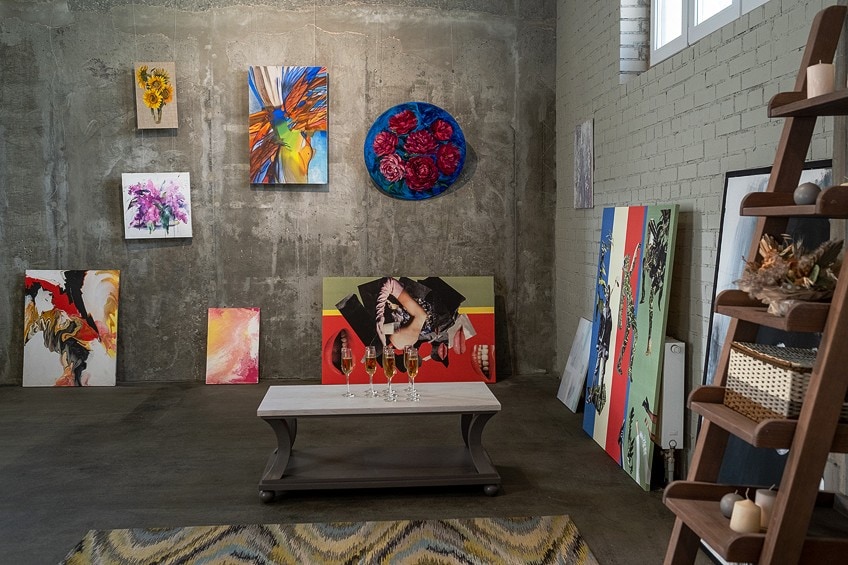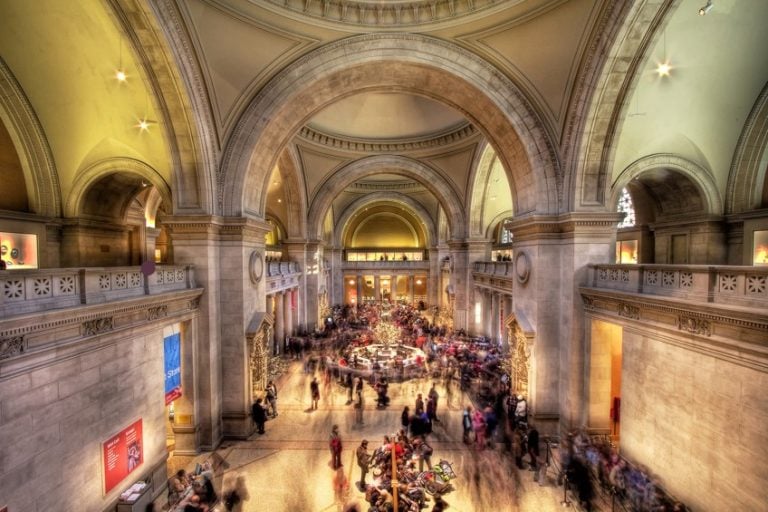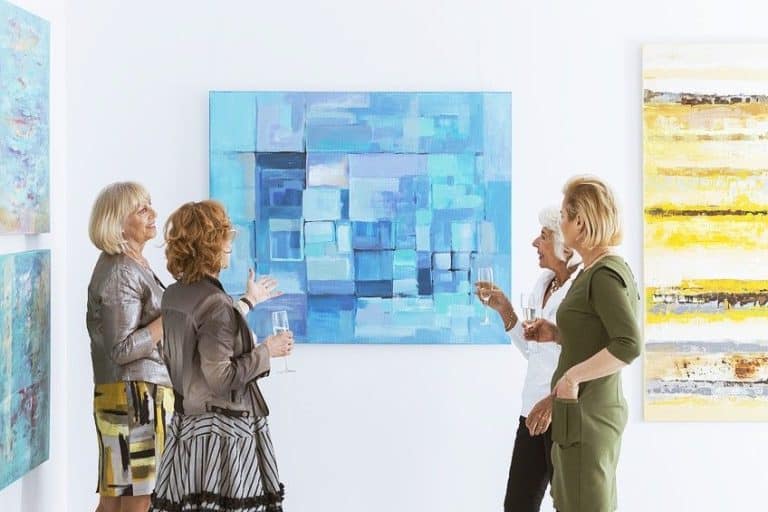Why Does Art Involve Experience? – A Look into the World of Art
In this article, we will look at why art involves experience. This experience does not stand for the training or experience an artist acquires throughout their career, but rather the experience of making art from the artist’s perspective and the experience that motivated the artist to make an artwork in the first place. Instead of considering art from the typical audience perspective, we will look at the concepts and values Process Art expresses in trying to answer the question, “Why does art involve experience?”
Table of Contents
Why Does Art Involve Experience?
The philosophy of art is a fascinating field and also where this article’s question finds its origin. People have pondered the importance, value, and catalysts behind artmaking for decades, but most people perceive and understand art for what it offers the viewer.
The importance of art as an experience the artist goes through is often overlooked by the art market.
Therefore, Process art is not commonly seen on display as a reflection and documentation of the experience the artist has in the act of making. In this article, we will look at Process art, the preverbal function of art, and the maker’s experience of the art they are creating.
Communicating Mystery
Even the first art humans created aimed to communicate complex experiences words could not capture. The Khoisan art found in South African caves that are up to 28 000 years old reflects the deep mysteries of mind, myth, and culture. These people used certain caves as holy gathering spaces to conduct ceremonies.
The cave wall was believed to be the veil between the spirit world and the human world.
After altering their mental states by doing trance dances and using psycho-active substances, the shamans would cocreate with the natural forms of the rocks and paint visions onto the cave walls. If they saw deer in the forms of the rocks, they would highlight these images by painting them in natural color pigments.

Centuries later, during the Gothic period from the 12th to 16th century, for example, communities would build churches together without one person adding their name to the art created in these spaces as a means of honoring God. In some of these churches, the sculptures and artistic details are in such small and unnoticeable places because it was meant for the eyes of God and not for the consumption of mankind.
Both of these examples reflect the function of art to communicate something about the human experience that is not translatable in words.
It also makes clear why art involves experience and why that experience cannot be ignored. Terence McKenna echoes this idea in his lecture, Opening the Doors of Creativity, by arguing that the first artists of our species were called shamans. He says that artists are the “antennae to the transcendental other”. This transcendental other can have out-of-body experiences when it comes to the experience of God, but can similarly be engaged by powerful emotions. So, why is art the tool we use to communicate transcendental experiences and how has our understanding of it changed throughout recent years?
How Does Art Involve Experience?: Art and the Preverbal Brain
Artists use mediums that activate the senses to communicate. In the experience of making art, artists often go through a process that could be called “channeling”. It might sound strange and magic-like, but what this simply means is that the artist is translating an experience of their bodies onto a canvas or piece of clay. For some truly magical and mysterious reason, that piece of clay or canvas then holds a resonance of the experience the artist went through and thus has the power to evoke a similar emotion or any other emotion in the viewer of the art piece.
What makes art such a powerful tool to communicate the experience of the artist, is that it defies the limitations of language.
The body always experiences first, and then the mind connects it to concepts, language, and mental understanding. However, we know our language is limited and that it is a broken tool when it comes to accurately express the mysterious complexities of being. Concepts also come with their own layered personal understanding.

This is influenced by a specific person’s history and life experience and, therefore, complex and abstract concepts like love, peace, pain, harmony, grief, and so on can never truly communicate the textures and bodily individual experiences of these emotions. Art, however, accesses the body first through color, light, smell, texture, and so on. Before the mind forms an interpretation, an experience is instilled in the viewer by an artwork. In this case, even the absence of feeling or feelings of disgust or confusion is catalyzed by the artwork in the body.
According to John Dewey’s (1859 – 1952) theory of art, society started focusing more on the interpretation of art than the experience it evokes in the maker and viewer when art became a separate field. In the modern age, when we separated art from science, history, mathematics, and so on a fracture between art and everyday life occurred.
Instead of art’s aesthetic function serving to amplify, for example, religious experiences in accessible religious spaces, we isolated art from everyday experiences by locking it up in museums and galleries.

Dewey argues in his book, Art as Experience (1934), that an art object is not art but that the object plus the experience it evokes constitutes art. He further says that by removing art from everyday life, like seeing art in a fire or making masks for ceremonies, we made people less interested in art and now have to convince people of the importance of art. Whereas, before the importance was obvious and inseparable from life itself.
In modern exhibition spaces, art is cut off from its historical, political, and societal context and treated solely as aesthetic objects. The acknowledgment of the viewer’s subjective experience and interpretation of the art and the artist’s hand is almost entirely omitted.
Meaning, that the white cube gallery space is so far removed from the inception of the artwork as a sensory experience of the artist in their studio that the original “resonance” of the work is warped. This does not mean that art should only be viewed in the artist’s studio, but rather that the almost clinical gallery spaces that exhibit contemporary art created this idea that for something to seriously be considered art it needs to be stripped from its context and placed in such spaces. This removes art from profound and personal day-to-day experiences, which is where its source lies.
Process Art: The Raw Form of the Art Experience
How does art involve experience and where can we see this experience? An art piece in a gallery is often a final and refined product of the artistic experience, but when an artist uses mediums to translate their experiences there is often a whole lot going on that is not shown in galleries and museums. That is why we will look at process art in this section to see how we can access the experience involved in art.
What Is Process Art?
Process art is everything an artist makes! From the planning sketches, and the studio notes, to the incoherent scribbles and artist’s journals, it is the entire process of making an art product and considers anything that an artist makes as an art product. This form of art often exhibits everything the artist made from the moment of inspiration, as well as the “final” product.
However, there is not really something like a final product in process art, as everything the artist creates is valued equally).

The artist’s hand is very evident in the work and their process can almost be retraced by the viewer. The focus is on how the materials were used by the artist to express their particular experience. For example, the forms created by Morris Louis (1912 – 1962) in his color field paintings, are shaped by the artist’s action in pouring the paint, the thickness of the paint, and the absorbency of the canvas.
Process art, thusly, argues that the artist’s influence should not be separated from the products they produce.
Process art became popular during the 1960s and 1970s and is particularly associated with Abstract Expressionism and the paintings of Jackson Pollock. This is interesting because Dewey’s theory of art as an experience was also a big influence on Abstract Expressionists.
Process Art Experiences Any Artist Can Try
Process art can reveal fascinating and uncurated aspects of the art-making process. Most artists practice Process art (in fact, the making of Process art is what makes art-making a practice) but because there is so much emphasis on the final product by the art market, some vital process art exercises are often neglected by artists.
If you are an artist and would like to experiment with process art, you can try the following exercises.

If you are thinking about exhibiting these process elements created you can consider choosing a special paper that will make the work look aesthetically coherent or do all of the exercises in your artist journal, but do not let this become a block for you.
The idea is to really capture the authentic process of your experience without being too self-aware.
Brain-Dumping and Concept Maps
When an emotion or experience of note comes up for you that you would like to translate into art, starting with a brain dump is always best as it will help you define what you want to capture. A brain dump is a conscious stream of writing exercise where you do not edit or curate your writing to make sense or even be grammatically correct.
Write out everything that pops up into your brain connected to the experience you want to capture, as well as the experience of wanting to and working towards capturing it.

It helps to give yourself a page limit that will push you to write more than you think you will be able to. For example, if the idea is new and you think you will only be able to write a paragraph, commit to writing a whole page. After you have done a brain dump, you can read through it and create a mind map of the concepts and symbols that stand out to you.
This can help in creating images that explore the experience you want to express.
Non-Directional Exploration
Incorporating and exploring the concepts that came up in the previous exercises in a non-directional way can keep the art-making experience open-ended and help you refine the “final products” you want to produce.
The following exercise is an example of a non-directional visual exploration.
- Scribble lines on a page. Let your pen flow without direction until the page is full and you feel done.
- Use color to bring out forms. Almost like when you are identifying shapes in the clouds, let images come out of the lines and define them by coloring them in.
- Connect the images to concepts. Now, you can do a writing exercise where you create a meaning for the image connected to the experience you want to depict in the final artwork or body of work.
- Repeat the exercise several times.
Collages
Collages are an excellent way to explore and deepen your process. You can use the images created in the non-directional exercise and add cut-outs from magazines to further flesh out your ideas. Collages involve juxtaposition, which can help your art relate to the complexity and personal quality of experience.
Practice Sketches and Technical Exploration
After you have fleshed out the visual elements you want to incorporate into your expression, you can start doing practice sketches and medium exploration. Color testing, medium use, and compositional exploration all form part of the technical development of your art piece. These sketches and exploration reflect the way you want to curate the viewer’s experience of what you experienced.
When included in an exhibition, they give interesting insights into your process of making art.

We argue in this article that art is the only thing we as humans create that comes close enough to the actual experience it aims to communicate. Besides the art product, the experience of the artist and viewer is just as important to the art experience. This is an interesting and mysterious element of the art-making process that artists can take into account and use to their benefit when expressing their personal experiences of life through their art.
Frequently Asked Questions
Why Does Art Involve Experience?
Art’s origin is in the desire of an artist or any person to express and translate an experience they have through mediums that do not involve typical language. Even poetry and lyrics use language in strange and interesting ways to conjure up the visuals in the brain to evoke a feeling instilled in the text by the artist. Art can, therefore, not be separated from the experience of the artist.
Is the Artist’s Experience of Their Art Important to the Viewer?
This depends on how you value art. In the Process Art movement, the artist’s experience in making art is of undeniable importance. However, some might argue that the artist’s experience behind the art created is simply what creates an emotional resonance so that the art piece might evoke a similar or other emotion in the viewer.
How Does Art Involve the Experience of the Viewer?
Art catalyzes emotions and, therefore, experiences. This makes art a platform where humans share experiences. Essentially, what makes up the concept of art is the art object, plus the resonant emotion of the artist behind the work, plus the evoked emotion or experience of the viewer. If the viewer is not there to perceive the art, it brings up the question of whether the product created by the artist is art at all.
Is Process Art Really Art?
Process art might not be included in most exhibitions but the reality is that everything that the artist considers as art, is art. There is no way to dismiss anything as art in our contemporary moment, even though art institutions constantly try to uphold some sort of standard of what real art is. Ever since artists were left to find their support to create art outside of the support from patrons and institutions, they have had the power to call whatever they want art.
Nicolene Burger is a South African multi-media artist, working primarily in oil paint and performance art. She received her BA (Visual Arts) from Stellenbosch University in 2017. In 2018, Burger showed in Masan, South Korea as part of the Rhizome Artist Residency. She was selected to take part in the 2019 ICA Live Art Workshop, receiving training from art experts all around the world. In 2019 Burger opened her first solo exhibition of paintings titled, Painted Mantras, at GUS Gallery and facilitated a group collaboration project titled, Take Flight, selected to be part of Infecting the City Live Art Festival. At the moment, Nicolene is completing a practice-based master’s degree in Theatre and Performance at the University of Cape Town.
In 2020, Nicolene created a series of ZOOM performances with Lumkile Mzayiya called, Evoked?. These performances led her to create exclusive performances from her home in 2021 to accommodate the mid-pandemic audience. She also started focusing more on the sustainability of creative practices in the last 3 years and now offers creative coaching sessions to artists of all kinds. By sharing what she has learned from a 10-year practice, Burger hopes to relay more directly the sense of vulnerability with which she makes art and the core belief to her practice: Art is an immensely important and powerful bridge of communication that can offer understanding, healing and connection.
Nicolene writes our blog posts on art history with an emphasis on renowned artists and contemporary art. She also writes in the field of art industry. Her extensive artistic background and her studies in Fine and Studio Arts contribute to her expertise in the field.
Learn more about Nicolene Burger and the Art in Context Team.
Cite this Article
Nicolene, Burger, “Why Does Art Involve Experience? – A Look into the World of Art.” Art in Context. September 29, 2022. URL: https://artincontext.org/why-does-art-involve-experience/
Burger, N. (2022, 29 September). Why Does Art Involve Experience? – A Look into the World of Art. Art in Context. https://artincontext.org/why-does-art-involve-experience/
Burger, Nicolene. “Why Does Art Involve Experience? – A Look into the World of Art.” Art in Context, September 29, 2022. https://artincontext.org/why-does-art-involve-experience/.











